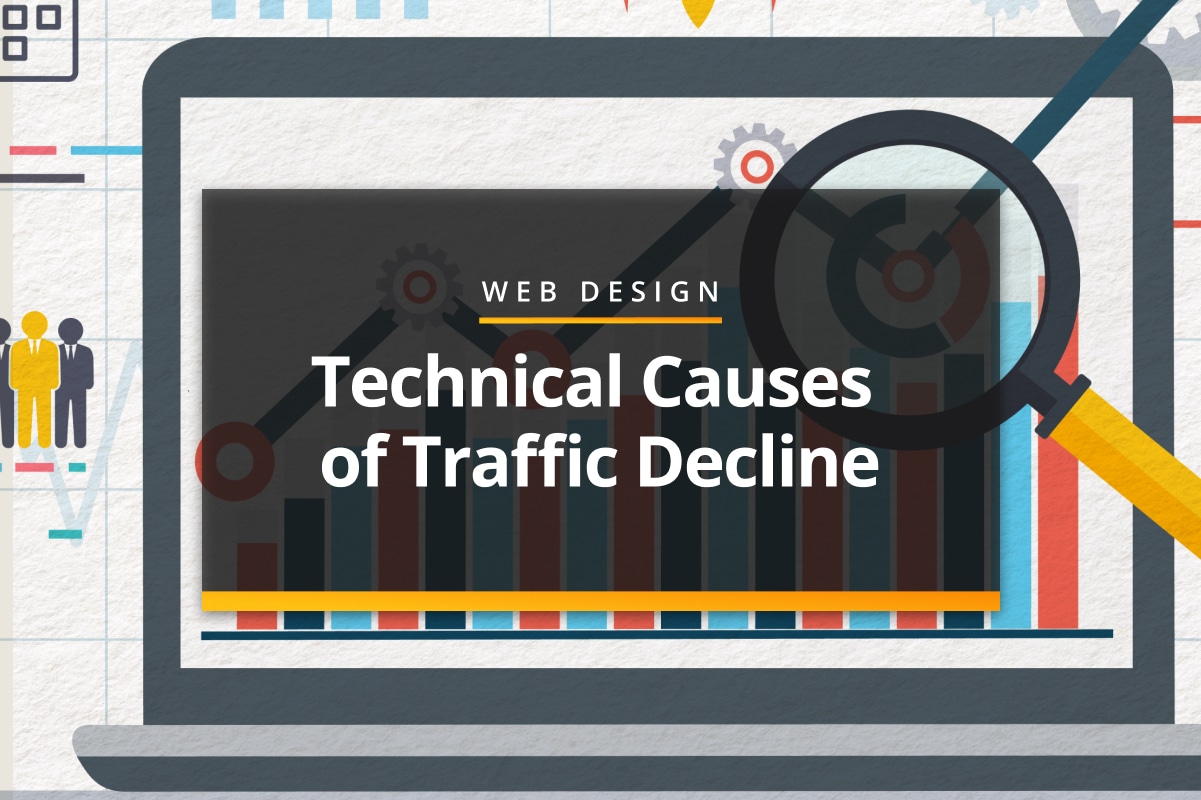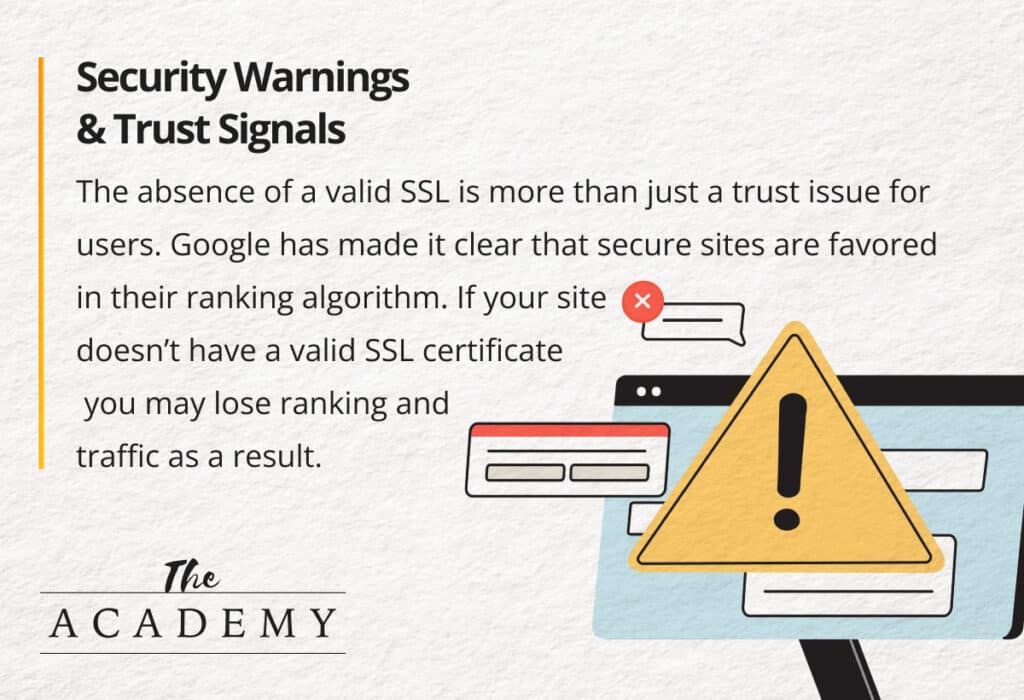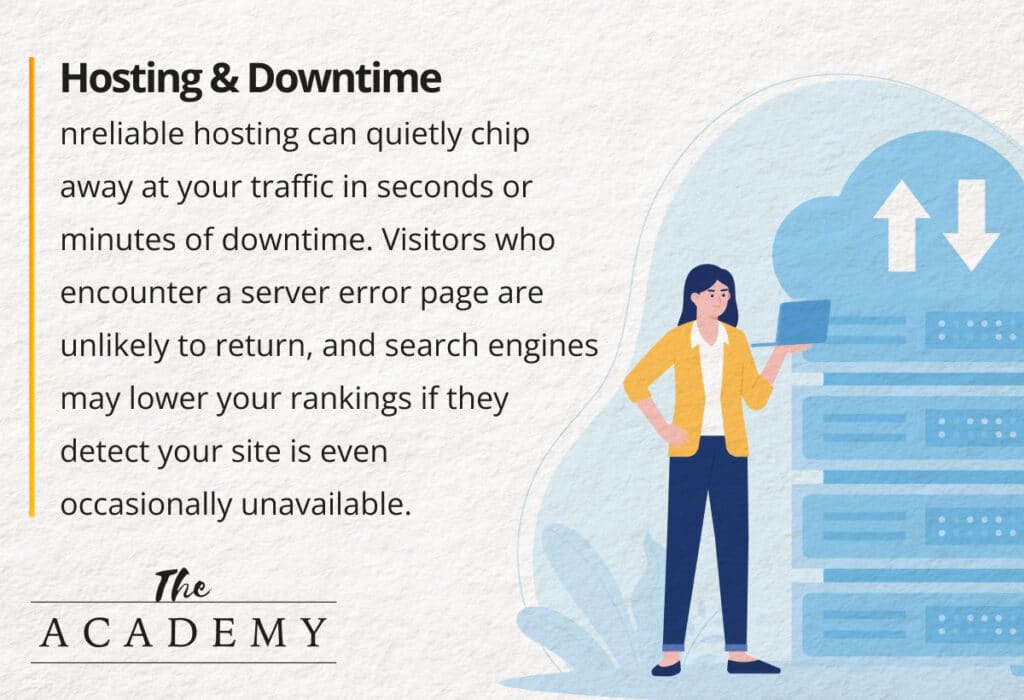
Few things can spike more anxiety for a business owner or marketing director than watching your website traffic suddenly and unexpectedly drop. You’ve worked hard on your site and your marketing efforts to build momentum, so when you notice the numbers starting to dip, it’s natural to assume that your messaging isn’t connecting with your ideal audience for some reason. But before you start reworking your campaigns from scratch, it’s a good idea to check the technical aspects of your website.
Technical issues are an often overlooked silent traffic killer; search engines and your users may be hitting road blocks you don’t even know exist. Let’s look at a few of the most common technical issues and how they might be hurting your site traffic.
Site Speed

If your site is slow, it doesn’t matter how great your content is—your audience isn’t going to wait around to find out. Site speed is a measure of how quickly your site’s pages load when someone clicks a link or types in a URL. A delay of even a few seconds can cause users to disengage, and search engines factor page speed into their ranking algorithms, meaning that a slow site can result in fewer people finding you to begin with.
Slowdowns can be caused by a range of factors, including oversized images, bloated code, or outdated plugins. Fixing these issues doesn’t always require a complete overhaul. Oftentimes you can speed up your site significantly by compressing images, using a CDN to deliver your pages more quickly, and enabling caching. More advanced fixes might require finding replacements for outdated or unoptimized plugins, or reworking portions of your site that are causing loading issues, such as large product catalogs.
Security Warnings & Trust Signals

Have you ever landed on a site and gotten a “Not Secure” warning from your browser? That’s what happens when a website doesn’t have a valid SSL certificate, which is the technology that encrypts data to make browsing the web safer. Just as you probably left a site that was flagged as “not secure”, if your site’s SSL has expired or is configured improperly, your audience may see your site as untrustworthy and turn around immediately upon arrival.
The absence of a valid SSL is more than just a trust issue for users. Google has made it clear that secure sites are favored in their ranking algorithm. After all, they want to remain a trusted platform, so sending users to secure sites is in their best interest as well. If your site doesn’t have a valid SSL certificate you may lose ranking and traffic as a result.
Hosting & Downtime

Even if your site is beautifully designed and technically perfect, it won’t matter if people can’t access it reliably. Unreliable hosting can quietly chip away at your traffic in seconds or minutes of downtime. Visitors who encounter a server error page are unlikely to return, and search engines may lower your rankings if they detect your site is even occasionally unavailable.
Downtime can be caused by a variety of factors, but frequently the culprit is an overloaded or outdated server. If you’re on a bargain-basement shared hosting plan, your site might be competing for resources with hundreds of other sites. That means that when one site hogs the bandwidth, your site slows down or may become unreachable. Investing in a high quality host with strong uptime guarantees is one of the best insurance policies against unexpected traffic loss.
Glitches that Look like Traffic Loss

Sometimes what looks like a traffic problem is really just a measurement problem. Analytics tools rely on small bits of code embedded in your site to track page views, visitors, conversions, and more. If those snippets of code are accidentally removed, edited, or misconfigured, your traffic data may suddenly look much worse than it really is. This is more common than you may think; depending on how your analytics code is implemented, even a seemingly straightforward plugin update may cause issues.
Before you panic over a traffic drop, it’s always worth verifying that your analytics tool is tracking everything correctly. Double check that all pages include the correct analytics code, and that any filters or event tracking rules are behaving as expected. Google analytics even has a tool that allows you to test the connection between your site and their platform. Fixing a measurement glitch won’t bring back lost visitors, but it might save you from chasing a problem that doesn’t actually exist.
The Bottom Line
It’s never fun to see your traffic decline, but it doesn’t always mean your marketing is failing or that your audience is disappearing. The next time it happens, think like a mechanic: pop the hood, poke around a bit, and rule out these basic technical issues before considering something more existential. By diagnosing and resolving these relatively simple problems, you can give your site the best chance to recover quickly and keep your traffic numbers heading in the right direction.
Most Popular Articles

Seeing Favicons in Your Google Search Results? Here’s Why…
Have you noticed anything different in your Google Search results lately? Google added tiny favicon icons to its organic search results in January. It was…

Business Growth and Digital Marketing News & Tips 11-17-24
Are you encouraging and rewarding innovation? Lee Cockerell is the former Executive Vice President of Operations at Walt Disney World. A lover of traditional red…

Business Growth and Digital Marketing News & Tips 11-27-24
A culture of gratitude "Feeling gratitude and not expressing it is like wrapping a present and not giving it." – William Arthur Ward Beyond being…








